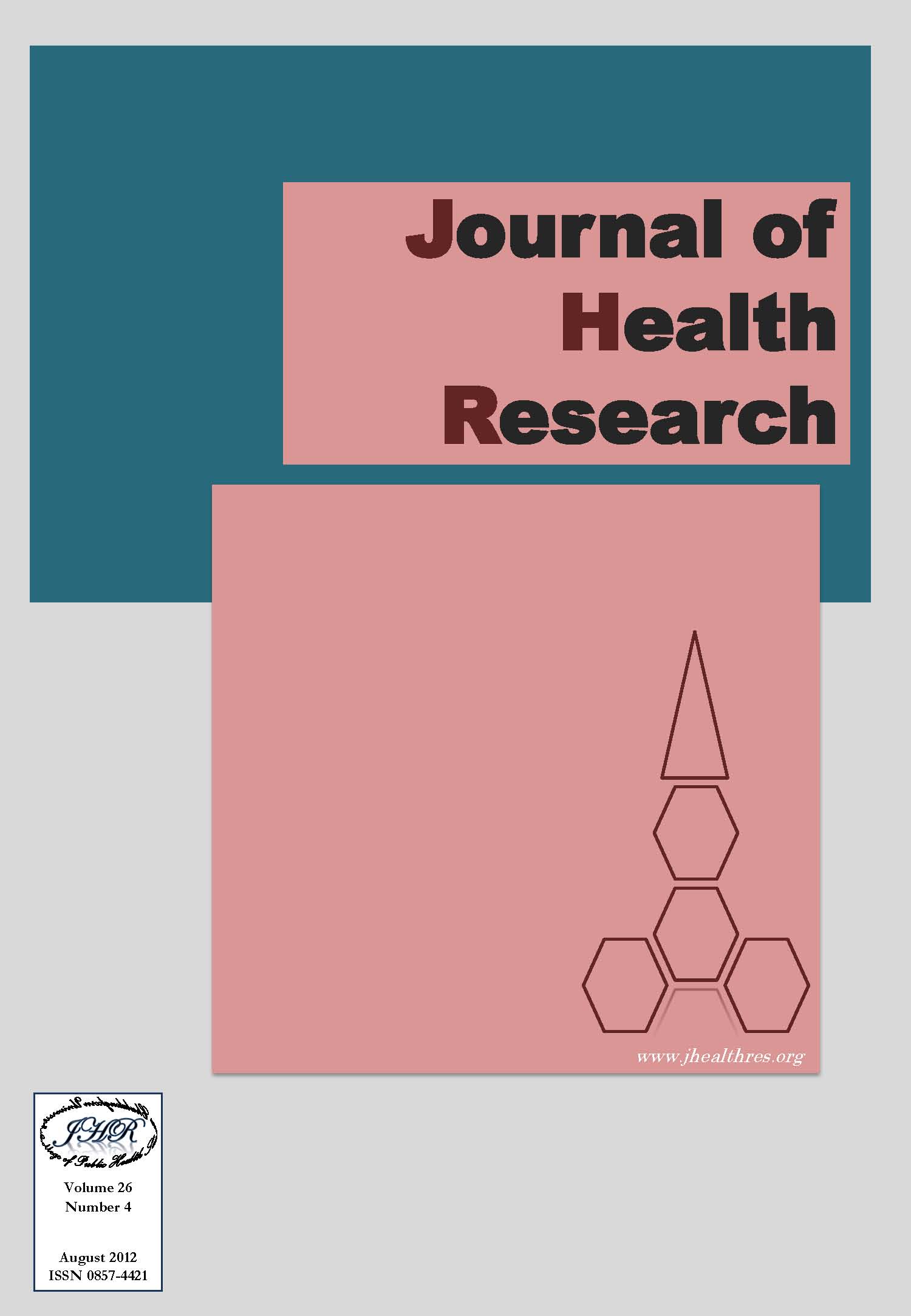Drinking Risk Level and Alcohol Consumption Situation among Senior High School Students in a Rural Area of Thailand
Keywords:
alcohol consumption, Risk level, AUDIT, senior high school studentsAbstract
A cross-sectional survey was conducted to assess the risk level of drinking by using the Alcohol Use Disorder Identification Test (AUDIT) as well as to explore the drinking situation among senior high school students in Phayao province, Thailand. Four high schools were randomly selected where 1,151 grade 10-11 (Mathayomsuksa 4 -5) students voluntarily participated in the survey. Data was collected by using an anonymous self-administered questionnaire. Data were analyzed by using descriptive statistic such as percentage, mean, and standard deviation. Chi-square was used to test the difference of alcohol consumption between boys and girls. The results shows that 64.9% consumed alcohol during their lifetime, 58.8% consumed last year and 35.0 % consumed in the last month. Among those who ever consumed in the previous year, most of them (65.8%) were low risk drinkers, followed by hazardous drinkers, suspected dependence and harmful drinkers with 23.1%, 5.7 % and 5.4 % respectively. The average daily intake among those who consumed in the previous month was 9.43 grams of ethanol. The most preferred beverage was beer (69.0%), followed by Spirit (49.2%), and White Spirit (37.1%). Moreover, 29.6% of them consumed Local Beverage (Lao Namkhao 10% alcohol), which can be easily prepared in the northern region of Thailand. There was significantly difference of alcohol consumption between boys and girls (p-value<.001). Moreover, boys were significantly higher risk of alcohol consumption among boys than girls according to AUDIT (p-value<.001). Among those who ever drank in their lifetime, two main causes leading drinking were social drinking (43.4%) and peer influence (29.8%). Over a quarter of them (27.9%) reported there was no specific alcohol content in their curriculum, but generally focuses on addictive substances. Conclusions, according to AUDIT majority of students were low risk drinkers and a quarter of them were high risk drinkers. Meanwhile, there was no specific alcohol content in school curriculum. Therefore, research suggests that development of alcohol prevention program for enhancing alcohol knowledge and establishing healthier alcohol use behavior among senior high school students is required.







